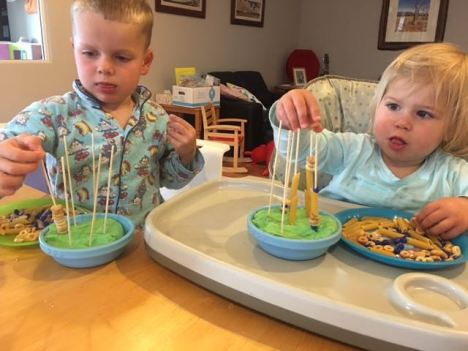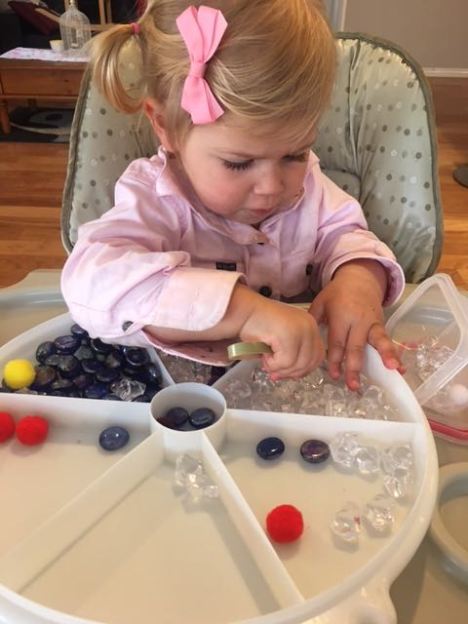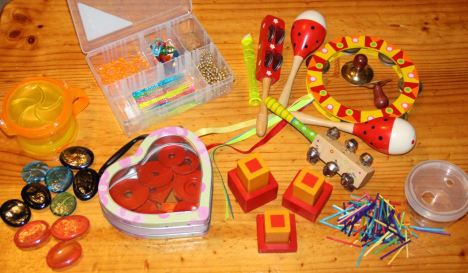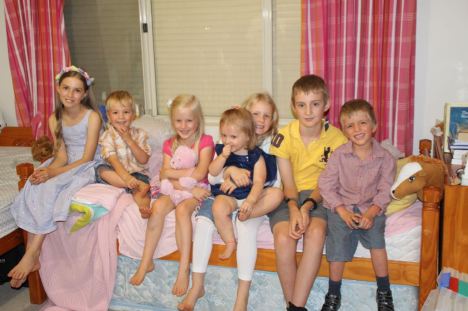
Today I am excited to introduce Kristy to you. She has been inspiring me with the different activities she has prepared for her children and I have asked her to share some of her tips and ideas with us. Over to her…
Angela invited me to share with you on her blog. Firstly I feel very privileged to be doing this as I am a huge fan of Ang’s blog and it has helped me so much with parenting my two little ones. I hope what I share will help you also. Nothing I am sharing is my original idea, just how I apply it to my family life. I am so thankful to the Growing Families courses we have completed and also to Angela for her mentorship and encouragement.
Over the next 4 posts, I will be sharing things that I have found helpful. The first is structuring your child’s day, the second is busy boxes, thirdly sensory tubs and lastly I will be sharing a chore chart that has really worked for our family.

STRUCTURING YOUR CHILD’S DAY:
We first heard about purposefully structuring a child’s day when our son was 18months old, after completing a toddler course from Growing Families. Now he is 4 and my daughter is nearly 2 and I have not looked back. It has been a huge help to myself and provides such a security for my children. They know exactly what is expected, they know what it means when a structured time is over (the timer goes off) and they know that Mummy makes all the decisions on how they spend their precious hours. It also helps me achieve things I need to get done in the day.
When I first began to structure my children’s day it was similar to when we first introduced couch time. At first it seemed a little fake, awkward and included lots of smiles while children either pined for our attention or were playing next to us very noisily. It seemed a little pointless, however we stuck with it and over time it was something my husband and I have started to crave. We can now catch up for around 15 minutes uninterrupted time while the children play near us. Even our son likes to remind us that “It is now couch time Mummy and Daddy.”
It’s the same with structuring your child’s day. It may seem pointless, loud, hard work and a bit of a joke when you start. But slowly as you persist with it, it becomes engrained into your everyday routine and in turn your children and yourself start to crave it. There has been many times in the morning when we have been in a little bit of a rush to get out of the door that a typical morning activity like table time has not been accomplished. My son begs for it now, so it’s used as an incentive once he has finished all his chores – if there is time left over he can do table time. I can really see the benefits of my children loving the structure and routine because of the security that comes with it. I have also found that trying my best to do certain structured activities at the same sort of time every day can help a lot. It saves the nagging and “What are we doing now?” questions.

Our day comprises of breakfast, table time (4yo) or highchair time (1yo), chores, playpen time (1yo) or play room time (4yo), focus time (1yo), outing, morning tea, lunch, nap (1yo) or room time (4yo), tv time (half an hour), afternoon tea, outside play, sibling play, focus time (4yo) or mat time (1yo), chores, dinner, bath, couch time (parents) while children play on the mat or nearby, teeth, bed (2yo) story time (4yo) , bed (4yo).
This of course is very flexible and often certain times aren’t achieved. I just love having a ‘go to’ when I need to get things done. And because everything is thought out, it means I know that my children are spending their time well. You can add anything into your routine – book time, craft time, walk, errands etc.
How to start: I tried small amounts of time first and made sure I used a timer when their ‘times’ were over. They soon picked up that Mummy comes when the timer goes off, not in answer to their cries. Starting small and building up is the way to train your children in this and using praise, praise, praise when the timer goes off to indicate how proud you are of them. Verbally stating the time too with statements such as “Well done for doing PLAYPEN time. You stayed in your PLAYPEN the whole time. I’m so proud of you for playing happily in your PLAYPEN” etc. reinforces what the child has achieved and the word PLAYPEN will bring a new meaning and expectation into their little minds.
Filed under: Routine and daily activities: structuring your child's day | Tagged: couch time, highchair time, playpen time, routine, table activities | Leave a comment »
















 After people finish counting my children and comment on how I must have my hands full, the next thing they say is often along the lines of “How do you get everything done?” The honest answer is I don’t get everything done. I don’t work part-time, I don’t meet my girlfriends for coffee several times a week, I don’t attend MOPS, Mother’s Group, Toddler Jam, Jungle Gym and the local playgroup every week. I have to choose my commitments based on my priorities, knowing that it isn’t my list I need to get through, but God’s! I have enough time to do everything He has for me to do. Frustration kicks in when I try to take on more than He asks me to. Jesus reduces my responsibilities to those of today and today is all He asks us me to cope with.
After people finish counting my children and comment on how I must have my hands full, the next thing they say is often along the lines of “How do you get everything done?” The honest answer is I don’t get everything done. I don’t work part-time, I don’t meet my girlfriends for coffee several times a week, I don’t attend MOPS, Mother’s Group, Toddler Jam, Jungle Gym and the local playgroup every week. I have to choose my commitments based on my priorities, knowing that it isn’t my list I need to get through, but God’s! I have enough time to do everything He has for me to do. Frustration kicks in when I try to take on more than He asks me to. Jesus reduces my responsibilities to those of today and today is all He asks us me to cope with.







